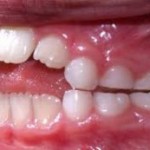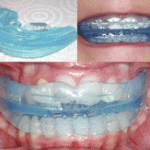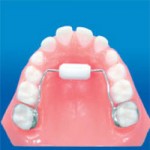Oral habits in children are a major concern for the dentists and parents. A baby’s mouth acts as a primary device for exploring the environment and his or her lips and tongues are stimulated by instinctive sucking. By random movements, babies discover their hands and toes and use these to continue the stimulation of their mouth and related structures. Normal habits grow out of these in the early developmental stages. However, some babies do not. They continued to retain these habits until they are toddlers and it created further dental problems.
1. Thumb or Finger Sucking
It is the placement of thumb or one or more fingers in various depths into the mouth. Baby’s sucking reflex will starts at 29 weeks in Intra Uterine life and should disappear by 3 ½ years old. It develops because of incorrect feeding practices between breast feeding and bottle feeding, deprived of attention from parents, learned behavior, peer pressure, social adjustment and stress.
What do you notice?
The particular finger or thumb will appear clean, reddened, chapped and with a short fingernail (or known as dishpan thumb). For chronic suckers, you will notice deformation of the finger with fibrous and roughened callus formation. Their upper lips will be underdeveloped and with a hyperactive lower lip.
Management
Parents can start off with chemical approach such as applying bitter or sour chemical (for example; castor oil, femite) over the finger so that your child is forced to abandon the habit following the unpleasant reaction. Parents can also use a sheet of bandage to wrap around the particular finger or thumb which will act like a thumb post for about 6 weeks. Commercial thermoplastic thumb posts are available at pharmacy or any nearby clinics.
Â
If your child still insists on the habit, you should bring him or her to a dental clinic where the dentist will prescribe removable appliances such as palatal crib, oral screen and quad helix to be placed in the mouth as a reminder therapy.
2. Tongue Thrusting
What do you notice?
Children will tend to separate their lips most of the time. Speech disorders are more likely to occur in these children for example; lisping and problem in articulation of s, n, m, t, d, l, th, z and v.
Management
For a child between 6 to 12 years old, dentists will usually prescribe a Pre-orthodontic Trainer which aids in the correct positioning of tongue with the help of tongue tags.
Removable appliances such as oral screen, tongue crib are also available as a reminder therapy. Another appliance is the Blue Grass Appliance. It is given to children during mixed or permanent teething stage for 3 to 6 months; whereby the child is instructed to turn on the rollers on the appliance to break the habit.Â
3. Mouth Breathing
It is a habitual respiration through the mouth instead of the nose. The main causes are chronic respiratory obstruction (allergies or chronic nasal infection), common cold, nasal polyp, deviated nasal septum, enlarged turbinates, adenoids or tonsils, and short upper lip.
What do you notice?
Children will have a typical feature of adenoid facies’ appearance that is; long narrow face, narrow nose and nasal passages, flaccid lips, short upper lip and high palatal vault. Gums are red, swollen and with heavy plaque deposition due to the constant mouth opening.
Management
Firstly, refer your child to an ENT Specialist to identify and eliminate any causes of nasal obstruction. Later, the dentist can gradually intercept the habit by using an oral screen. Parents are also encouraged to teach their children on physical lip exercise or deep inhalation exercise. It can be done by using a button of 1 ½ diameter and a thread is passed through the button hole. Ask your child to place the button behind the lip and pull the thread, while restricting it from being pulled out by using lip pressure. This is to increase your child’s lip muscular activity.
Â







